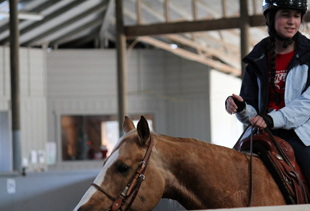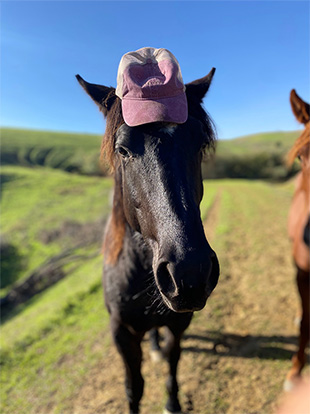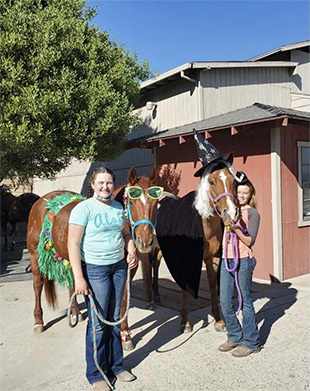Building Confidence in Horse and Rider: Part 3 of 3
We have been discussing creating confidence in the rider. In this post, we will look at the 2nd part of Clinton Anderson’s article “Cultivating Confidence,” written for “America’s Horse”, the members’ only AQHA magazine.
Lack of confidence on the part of your horse can make simple trail rides and adventure. A new sign posted by the freeway (looking at you Roberto!), a dead tree stump (sound familiar Nell?), unexpected puddles, turkeys…are you getting the idea? All these “surprises” have been known to cause a reaction in a trail horse right here at Arriba Vista Ranch.
Let’s use puddles or mud as our first example. Using the bending and turning you practiced with the serpentine in the Building Confidence Pt 2 discussion, ride your horse in ever-decreasing circles, turning into the puddle or wet ground. Always turn towards the problem. This definitely a time for “whisper”, not “speak” or “shout”. It is also a time for patience. You only have to ask one more time than your horse refuses a task. Then, of course, ask again.

I don’t know if any of you saw my adventures with Hank and the task of riding through the gate into the pasture next door. Our first trip we spent at least 30 minutes trying to go through the gate. By continuing to ask, using verbal encouragement, and never turning away from the gate, we finally made it!! Then what? Do it again and again, of course. The next ride, it took 10 minutes, the ride after that Hank was on edge, but went right through the gate. Now we don’t even think about it. You have to out wait your horse.
One advantage of riding circles, bending your horse’s nose and keeping him busy is that it takes their mind off the problem. Ad added advantage is that it will take the rider’s mind off the problem and will reinforce to you and your horse that you are the one in control.
If there is a spot in the arena that your horse shies at, Anderson recommends riding in a circle in front of the spot, then asking your horse to do a “roll back”, or 190 degree towards the problem spot, using the fence as an aid in that turn. Again, always turn facing the problem. If your horse spins away, turn him to face the spot, being consistent and patient. When your horse has finally listened and is calm by the spot, Anderson recommends giving him a break right there. Let your horse associate a rest and praise with that spot. It is important that his last memory of the problem be one of overcoming his fear, calmness, rest and praise.

Remember, horses are VERY auditory. They are very aware of your message when you praise, scold, converse or reason. We have all seen our horses put their heads into the middle of a conversation we are having. Use the auditory awareness and talk to your horse.




